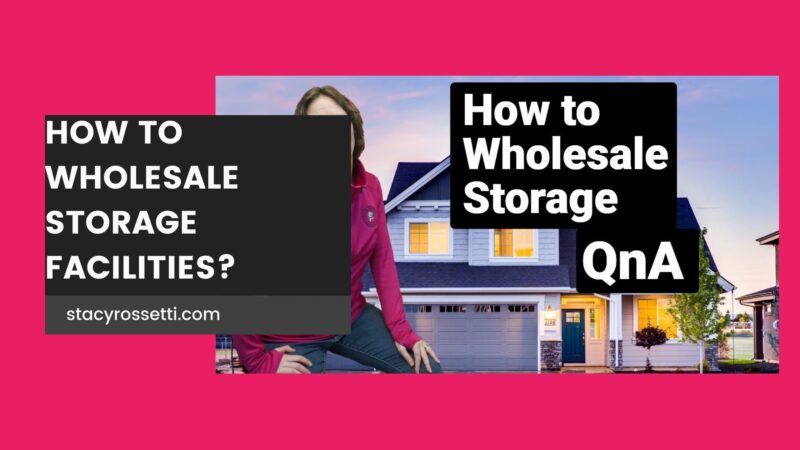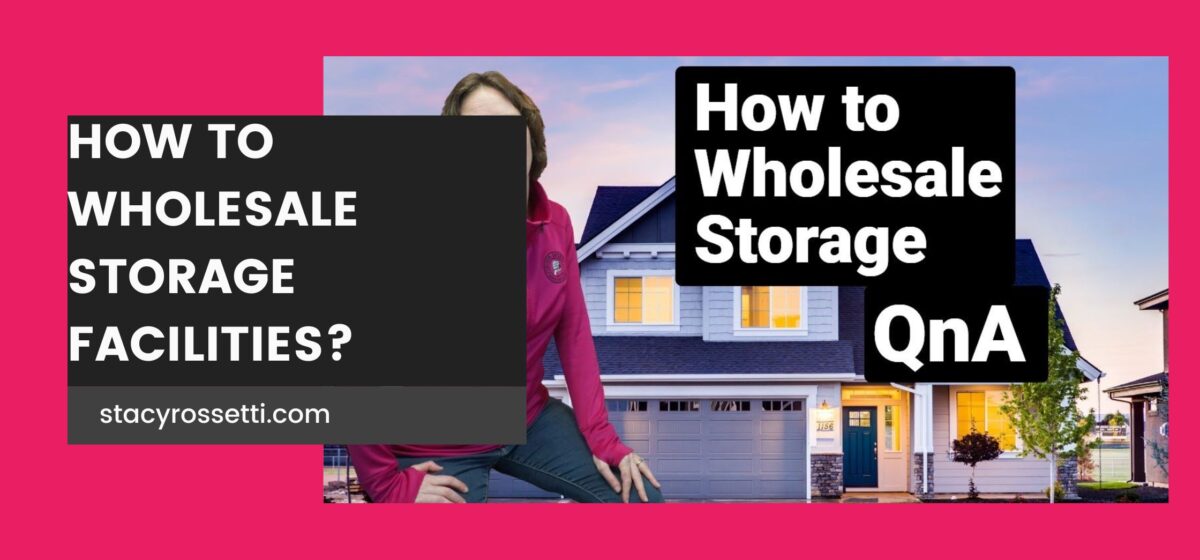
Wholesaling storage facilities is an emerging niche within the real estate investment world, offering lucrative opportunities for those willing to put in the effort. With the rising demand for self-storage units driven by lifestyle changes, urbanization, and business storage needs, this industry presents a golden chance to build wealth without needing significant upfront capital.
If you’re new to the concept or looking to refine your strategy, this guide will walk you through the fundamentals of wholesaling storage facilities. We’ll also incorporate actionable SEO insights, targeting key phrases like wholesaling self-storage, wholesale storage facilities, and insights from Stacy Rossetti, a renowned self-storage investing coach.
What is Wholesaling Storage Facilities?
Wholesaling storage facilities is a real estate strategy where investors identify undervalued or off-market self-storage properties, secure them under contract, and then sell the contract to another buyer for a profit. Unlike traditional real estate investing, wholesaling doesn’t require purchasing the property outright, making it a low-risk, high-reward venture.
The process involves:
- Finding the Deal: Locating motivated sellers of storage facilities.
- Negotiating Terms: Getting the property under contract at a below-market price.
- Assigning the Contract: Selling the contract to an end buyer for a markup.
This approach works well for investors who want to avoid the complexities of property management or lack the capital to purchase properties outright.
Why Invest in Self-Storage?
The self-storage industry is booming, with consistent growth over the past decade. Here are a few reasons why it’s a smart choice for investors:
- High Demand: Driven by downsizing, relocations, and e-commerce businesses requiring storage.
- Recession-Resilient: People use storage units regardless of economic conditions.
- Scalability: Facilities range from small, single-location units to massive complexes, catering to various investment scales.
- Low Overheads: Self-storage properties often have fewer maintenance and operational costs compared to other real estate assets.
Steps to Wholesale Storage Facilities
Wholesaling self-storage requires strategic planning, market research, and strong negotiation skills. Here’s a step-by-step breakdown:
1. Educate Yourself
Understanding the self-storage industry is critical. Stacy Rossetti book, Storage Unit Investing: Find Them, Fund Them, and Run Them, is an excellent starting point. Furthermore, consider joining self-storage investing courses or attending webinars to grasp market dynamics and negotiation tactics.
2. Market Research
Identify promising markets with a demand-supply gap in storage facilities. Tools like CoStar, LoopNet, and local property records can help you:
- Evaluate occupancy rates.
- Determine average rental prices.
- Analyze competitors in the area.
Target secondary and tertiary markets where competition is lower but demand remains high.
3. Build a Lead Pipeline
Motivated sellers are key to successful wholesaling. Look for property owners who:
- Face financial difficulties.
- Have underperforming or mismanaged facilities.
- Are retiring or exiting the business.
Use direct mail campaigns, cold calling, and online marketing to connect with potential sellers. Highlight the benefits of a quick, hassle-free sale.
4. Analyze the Property
Conduct a thorough evaluation of the property’s financials and physical condition. Key metrics to assess include:
- Net Operating Income (NOI): Revenue minus operating expenses.
- Occupancy Rate: Higher rates indicate better profitability.
- Market Valuation: Compare with similar facilities in the area.
Use these insights to negotiate a fair price.
5. Secure the Contract
Once you’ve agreed on terms, draft a purchase agreement. Ensure it includes an assignment clause, allowing you to sell the contract to another buyer. Work with a real estate attorney to avoid legal pitfalls.
6. Find End Buyers
Build a network of cash buyers or investors interested in self-storage. Platforms like Bigger Pockets, local REI groups, and LinkedIn are excellent for networking. Present your deals with detailed financial analysis to showcase the property’s potential.
7. Close the Deal
When an end buyer agrees to purchase, assign the contract and collect your wholesale fee. Fees typically range from $5,000 to $50,000, depending on the property’s value and profit margin.
Pro Tips for Successful Wholesaling
- Master Marketing: Use SEO strategies to rank your marketing campaigns. Target keywords like “wholesaling self-storage” and “wholesale storage facilities” to attract sellers and buyers online.
- Leverage Technology: CRM tools like REsimpli or PropStream can streamline lead management and deal tracking.
- Learn from Experts: Follow self-storage coaches like Stacy Rossetti for insights and mentorship. Her expertise can help you avoid common pitfalls.
- Stay Compliant: Ensure your contracts and transactions adhere to state laws. Transparency builds trust and avoids disputes.
Common Challenges and How to Overcome Them
- Finding Deals: Off-market properties are often the most profitable but require persistent effort and networking.
- Negotiation: Sellers may hesitate to sell at a discount. Build rapport and emphasize the benefits of a quick sale.
- Competition: As wholesaling grows in popularity, standing out requires unique value propositions and strong relationships.
Conclusion
Wholesaling storage facilities are an accessible and profitable way to enter the self-storage investment market. You can build a thriving business in this lucrative niche by mastering market research, negotiation, and marketing strategies. Whether you’re inspired by Stacy Rossetti success or driven by the growing demand for self-storage, the opportunities are immense.
Start by educating yourself, building your network, and taking actionable steps to find and close deals with storagenerds. With persistence and the right strategies, wholesaling self-storage can become a game-changing venture for your financial future.
————————————————————————————————————————————————————————
FTC DISCLOSURE: Any income claims shared by my students, friends, or clients are understood to be true and accurate, but are not verified in any way. Any products, programs, or personal recommendations made in this or any email communication from Stacy Rossetti for 3rd parties will likely result in some form of compensation from said 3rd party. Always do your own due diligence and use your own judgment when making buying decisions and investments in your business.


